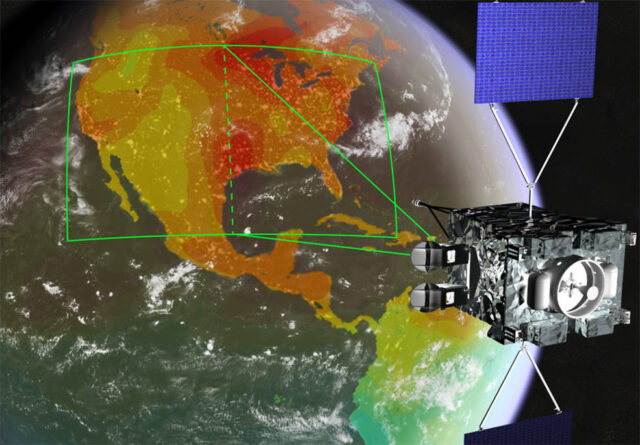
NASA Cancels GeoCarb Emissions Monitoring Mission
Except now it won’t. After a few weeks of paperwork, NASA has officially canceled the GeoCarb mission as it it likely would in late November. The mission, which was first in January 2018, will no longer launch this decade as originally planned.
NASA officials say the University of Oklahoma and Lockheed Martin collaboration would’ve been too resource-intensive to carry out, especially when compared with emissions-monitoring technologies that weren’t available during the mission’s formation. While GeoCarb was estimated to carry a total lifetime cost of $170.9 million back in 2018, that figure is now believed to hover around $600 million, making the project far less financially viable than it was once thought to be. Launching GeoCarb would also reportedly impart a two-year delay on NASA’s , which is considered a higher priority thanks to its more comprehensive output.

Conceptual GeoCarb mission illustration. (Image: NASA/Lockheed Martin/University of Oklahoma)
“Decisions like this are difficult, but NASA is dedicated to making careful choices with the resources provided by the people of the United States,” said Thomas Zurbuchen, associate administrator for science at NASA HQ, in the agency’s November statement. “We look forward to accomplishing our commitment to state-of-the-art climate observation in a more efficient and cost-effective way.”
NASA’s newer alternatives include two pieces of equipment that joined the International Space Station (ISS) in 2019 and July 2022, respectively. The first is the Orbiting Carbon Observatory 3 (OCO-3), which uses an array of swiveling mirrors to capture spanning 1,000 square miles at a time. The other is Earth Surface Mineral Dust Source Investigation (EMIT), an imaging spectrometer that maps the mineral dust composition of Earth’s arid regions to help scientists study how dust affects climate. The Earth System Observatory will also support researchers’ work to better understand climate change, natural disasters, and the holistic effects of modern agriculture.
NASA hopes to direct the resources that would’ve originally gone to GeoCarb to these programs as it pursues further insight into Earth’s climate. It’ll also direct some funds toward the Earth System Explorers program, which space science investigations based on specific targets devised each decade.
Now Read: